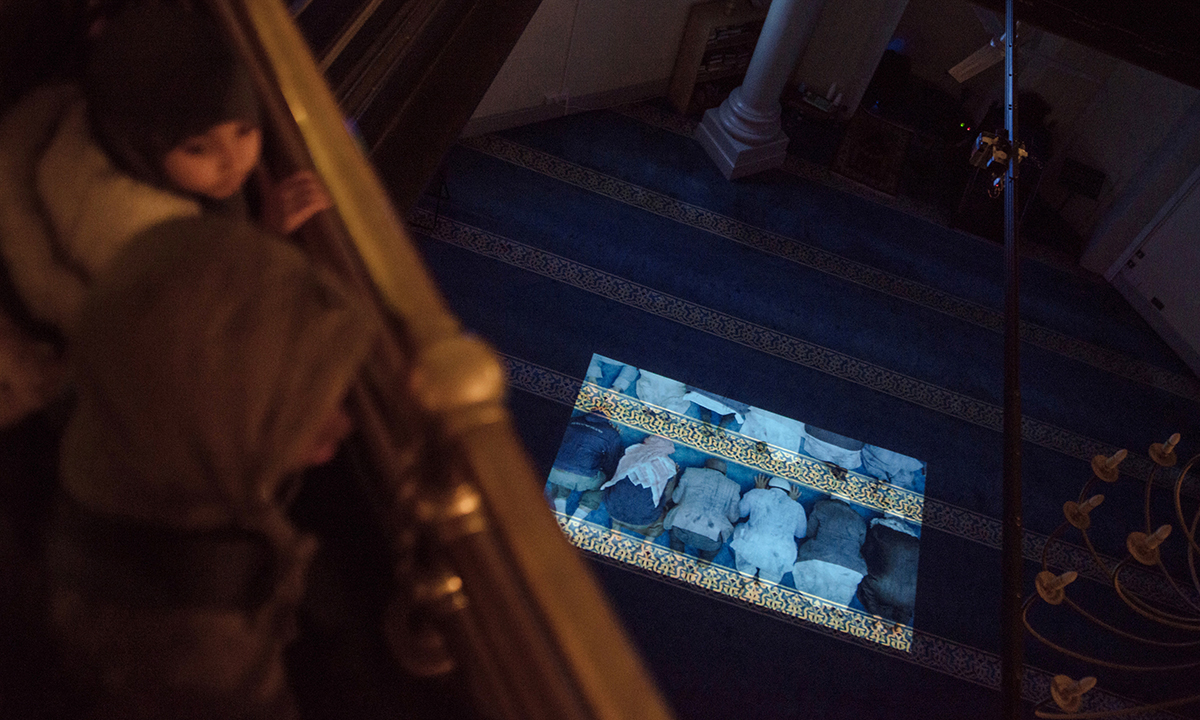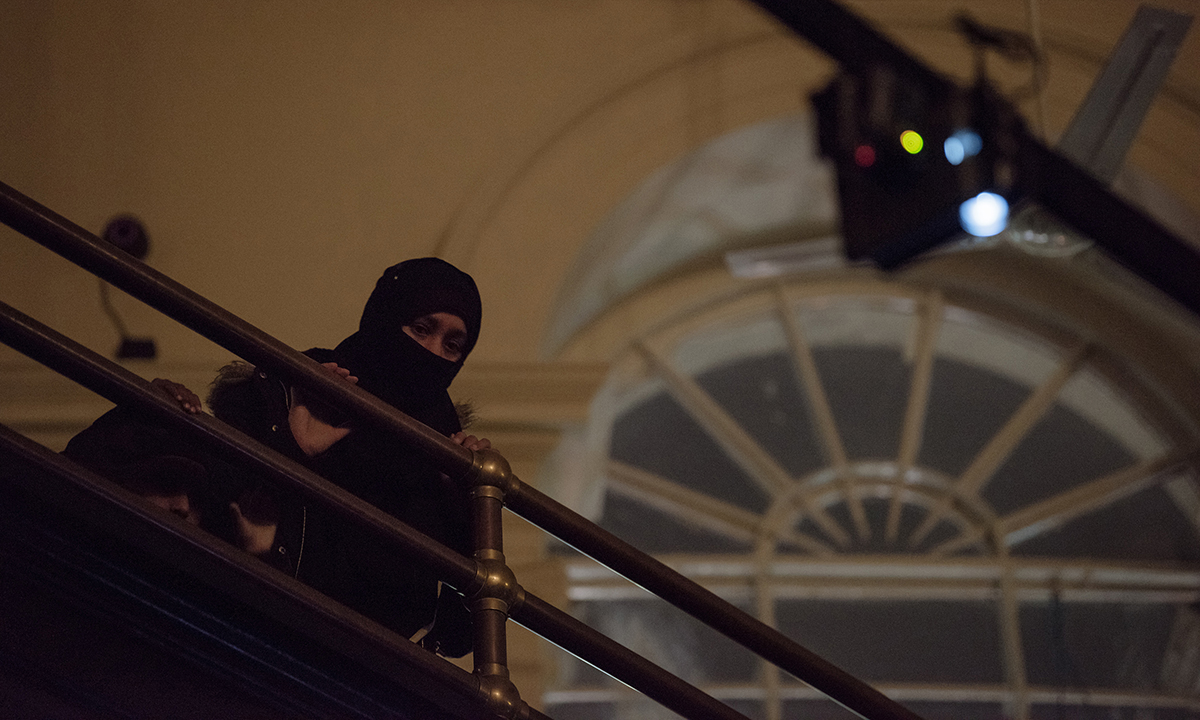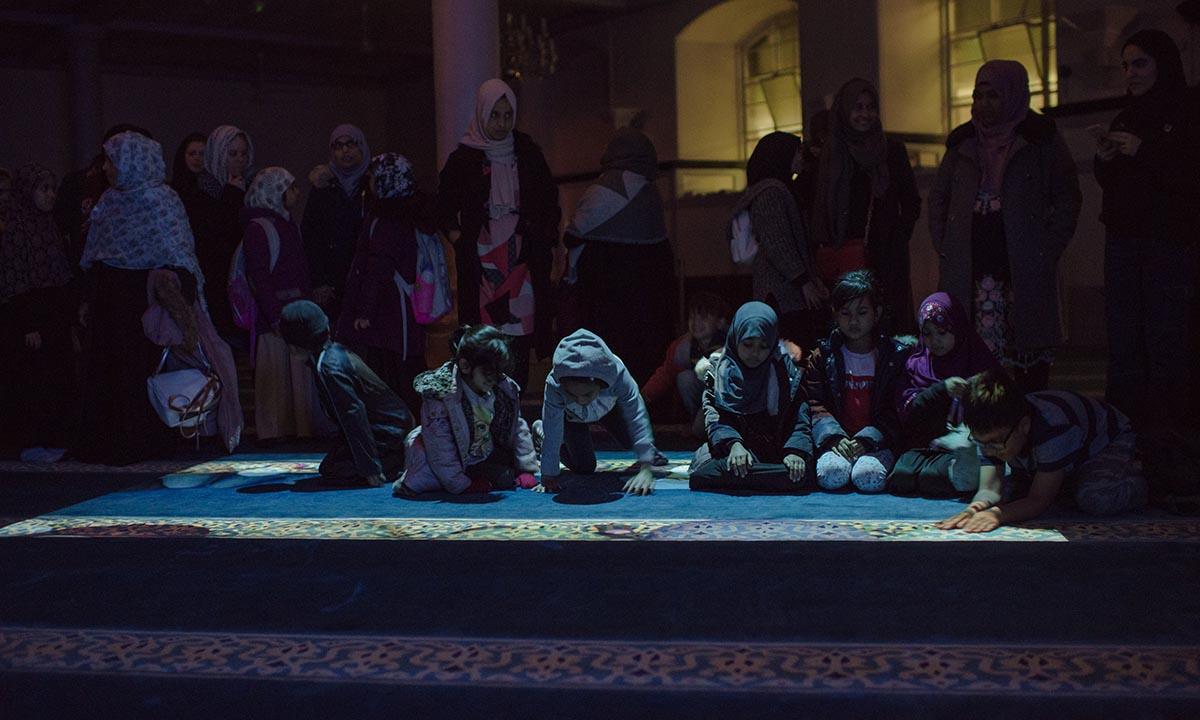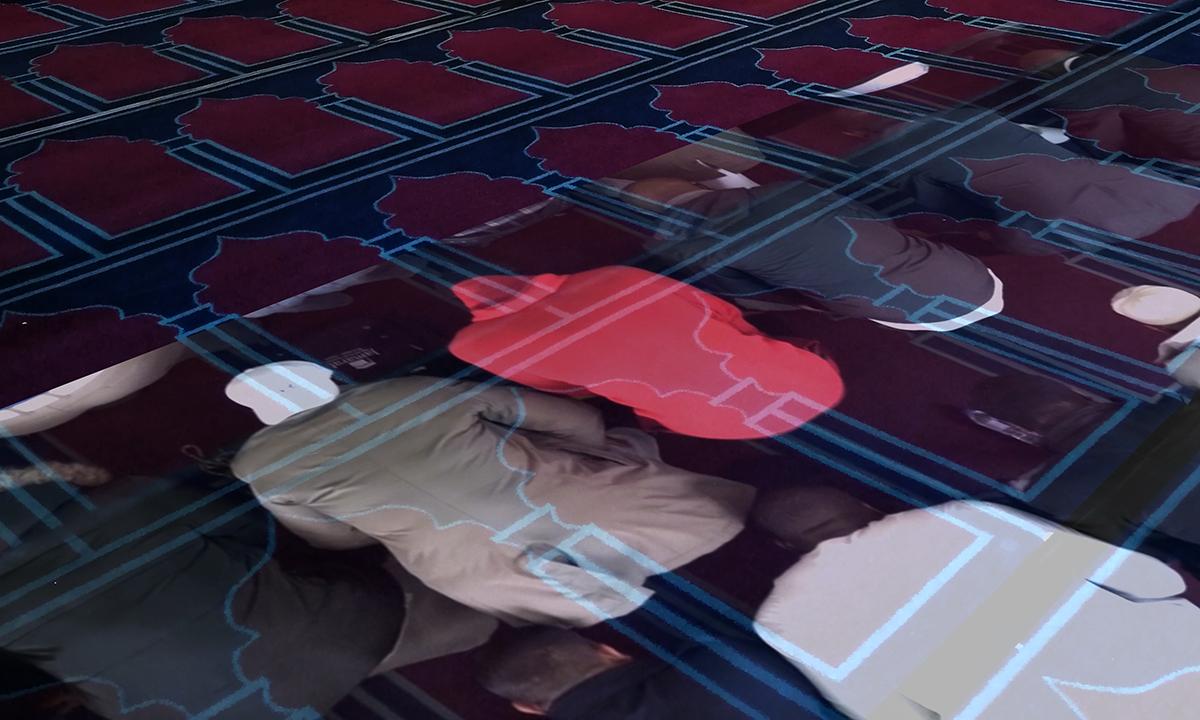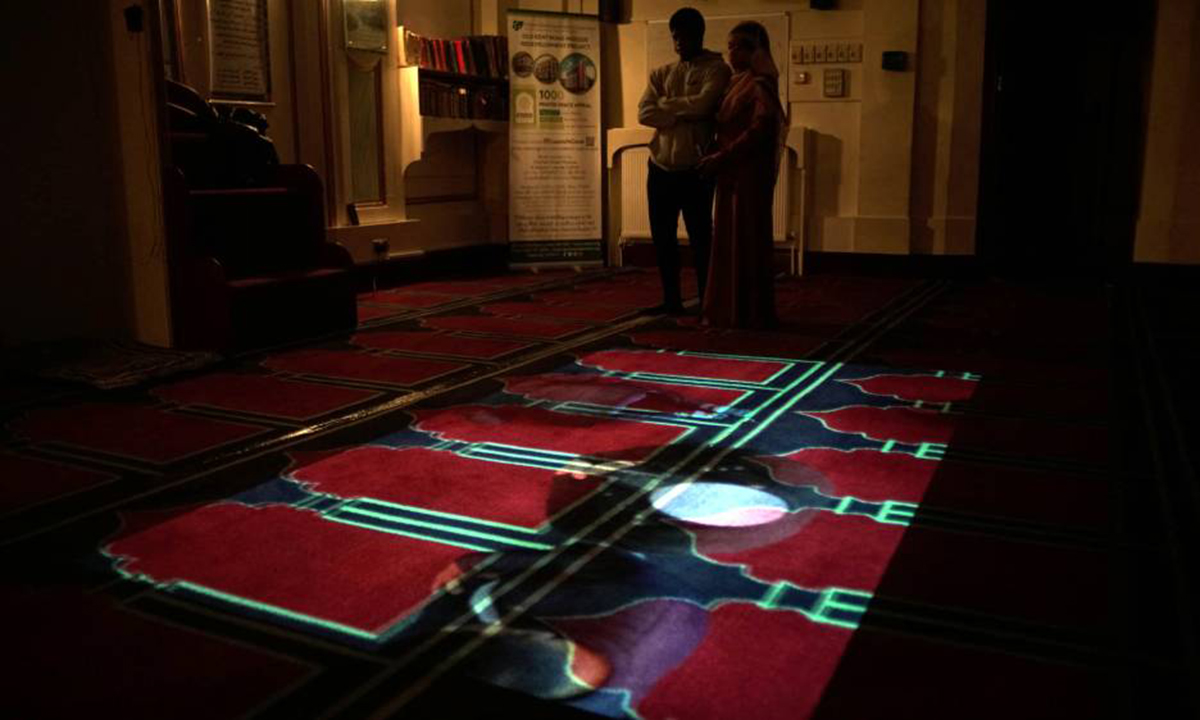Assembly is a series of site-specific installations that perform Islamic prayer spaces, made and exhibited in Brick Lane Mosque (2018 –19), Old Kent Road Mosque (2019–21) and Harrow Mosque (2021). Made in collaboration with the respective mosque communities, reflexive workshops established clear guidelines for the filming process, ensuring an ethical, non-intrusive approach that respects the sacred moment of worship. Subsequently, automated motorised camera rigs are designed and installed in each mosque to record the Jumu'ah (Friday) prayer from an aerial perspective. The resulting films were projected back onto the same carpets where the prayers originally took place, creating a reflective space for the congregation. This site-performance encouraged each community to view, inhabit, and critically reflect on their own spiritual practices, prompting new insights into the embodied nature of Islamic prayer. As one congregation member reflected:
The projection opened my eyes to the physical act of prayer. Of movement and repetition. Because my view or senses are often fixed on a focal point (the imam), I didn’t really consider my own movements. But of course, in the core of Islamic thought, it is the worshipper’s movements that are essential.
More Info
The controlled motorisation of both the camera and the projected image creates an experience where the frame appears to move fluidly through physical space, continually revealing and concealing the actual site below. In this way, Assembly does not simply reproduce acts of prayer but enacts a performance of the social and religious structures that constitute these sacred sites. Each installation operates as a self-making apparatus, producing a layered, living archive of religious practice and advancing a broader argument about the primacy of lived, embodied space over static, representational space. At the conclusion of each residency, each mosque congregation hosted a public event, welcoming both Muslim and non-Muslim visitors to experience Jumu'ah first-hand through the site-based installations. This act of hospitality further reinforced the project's commitment to fostering dialogue, understanding, and reflection across cultural and religious boundaries.
The film installations produced significant changes with the mosque communities, for example, opening up the mosque for the congregation to see the work after prayers meant that women could enter the main prayer hall, a place they had never seen before. At Brick Lane, the project built significant links with the local community, especially through a C of E primary school event where over 40 children, staff and parents visited the artwork at the mosque alongside pupils from Brick Lane Madrasah. The openness and confidence of the mosque community helped create a forum for reflection and productive debate. As a result, the mosque was no longer perceived as a “no-go area” outside of the Muslim community; it
provided an opportunity for non-Muslims to understand the religious practices taking place, without feeling like voyeurs.
The project provided a platform for groups such as Everyday Muslims, the Muslim Council of Britain, the Inclusive Mosque Initiative and Inter Faith Network UK to build links and create a sense of solidarity with Brick Lane Mosque and Old Kent Road Mosque. The findings and outcomes of this research were later presented as part of the Three British Mosques exhibition at the 2021 Venice Architecture Biennale, curated by Shahed Saleem and the Victoria and Albert Museum. The films are now in the V&A collection as permanent digital artefacts, each representing a stage in the evolutionary journey of the British Mosque.
